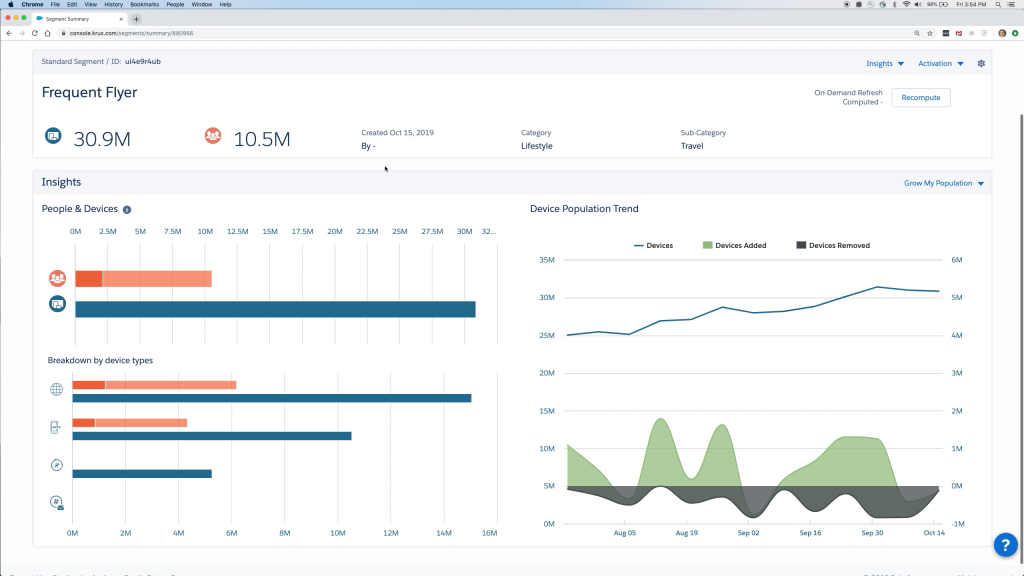Blog
14/05/2020
4 tips for data driven marketing automation
Customer experiences have become digitized. This is a huge advantage for businesses, since digital processes make it possible to measure actions and behaviour in a way that is not possible with real-life experiences. When applied correctly, user data from your website or online store can help turn your marketing actions into gold. Here are some tips and tricks for how to get started with more data driven marketing automation.
1. The importance of gathering data
Email marketing is proven to be an important tool in customer retention, especially when done correctly. Just sending out a bunch of emails to a list of recipients will turn out profitable if you are lucky, but most probably, it will just be an ineffective marketing action without any notable benefits.
However, with data-driven decisions, you can make every email marketing campaign profitable. To get there, you need data. Why? Because without data, you will never know your ROI and might spend time, money, and effort on unproductive activities. Also, without knowing what works and what doesn’t, you will never know what you need to make better. Hence, the first step to profitable email marketing is to actually start gathering data.
2. What kind of data is needed?
Before you start gathering data, you will have to know what kind of data you need. This depends on the key performance indicators (KPIs) you set for your email marketing.
Common KPIs used in email marketing include delivery rate, open rate, click-to-open rate, and unsubscription rate. These measures are usually provided to you by your email marketing platform and tell you how your recipients reacted to your emails: if they find them interesting enough to open them, if your content is worth clicking, or maybe if your emails are found useless and lead some recipients to unsubscribe from your list. Analysing these measures helps you interpret how well your message has reached your audience.
In order to find out your campaign’s ROI, you will have to connect your store or financial data to the email marketing platform. This is how you will be able to measure the conversion rate (CVR) and revenue.
-> Learn more: Case Avinor – Bringing customer-centricity to marketing
3. Identifying segments is key
Having a list of email addresses is a good start, but the more information you have on your recipients, the better. To get the most out of your email campaigns, you need segments. This will help you send the right message to the right group of people.
Imagine sending out an email that presents a tempting offer on men’s soccer shoes. Regardless of how good your offer is, your campaign will not turn out to be a success if 75% of the email recipients are women who do not play soccer.

Salesforce Marketing Cloud – Audience Studio
Segmentation can be done in various ways based on your business, products, and clientele. The most commonly used segmentations are demographics (age group, gender), interests, product preferences, transactional behaviour, and loyalty status.
It is also possible to use data to identify segments. However, the easiest way to get relevant information for segmentation is to set up a preference centre where your customers can adjust their personal information and preferences on what type of content they would like to receive.
As you get started, you can send out the same campaign message to all segments. With time, you will learn to know what kind of campaigns and content work best for each segment.
–> Read more: What prevents great marketing automation? 5 common reasons
Send, analyse, adjust, and repeat
Now that you have done the needed set-ups for data tracking, set your KPIs, and identified relevant segments, it’s time to send out your first marketing campaign.
Analysing data will give you important insights into what segment or content works. This will help you focus your efforts and money on the right activities. A good trick to measure your campaign’s performance is to compare it with industry standards. Also, a comparison with previous campaigns will give you valuable information.
It is essential to not only look at KPIs on a campaign level but also to compare the KPI performance within different segments. You might notice that your youngest age group (18-25 year-olds) don’t even bother to open your emails, but you have an impressive open rate of 60 percent within 35 to 45-year-old clients.
This finding might indicate that email is not the correct channel to reach a young audience, and maybe targeting this segment through social media marketing might be worth trying. However, putting in the effort to create content and campaigns for the age group of 35 to 45-year-olds has a good chance of increasing your ROI in email marketing.
Email marketing offers many opportunities, but we advise you to start with the basics. Once you master the basics, you can move on to new challenges, like automated or triggered email campaigns. Our marketing analytics professionals at Fluido are here to help you with any questions related to marketing.
-> Learn more: To get a more comprehensive understanding of data-driven marketing automation, see this webinar recording

Radek Janhuba
Data Scientist
Read next
10/08/2020
Completing the Funnel-View: Enriching your Salesforce Data with Marketing Insights
8 minute read
